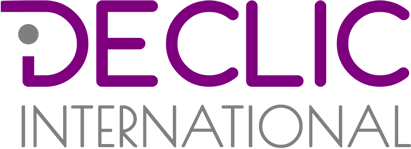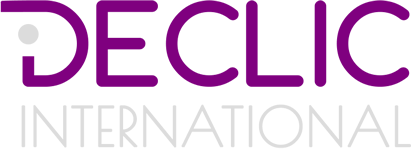What does Darth Vader have to do with inclusive leadership?

“Fairness is not an attitude. It’s a professional skill that must be developed and exercised.”
—Brit Hume
This is the first part of a three-part blog series that explores the three signature skills of inclusive leaders, i.e., leaders capable of attracting, inspiring and influencing people of all genders and ages, with different cultures, abilities and lifestyles.
Imagine a boat. This boat is your team, and the boat propeller is you, the inclusive leader. For a propeller to work properly, it needs at least three blades. Similarly, as an inclusive leader you need to consistently apply three skills: fairness, empathy, and proactivity. By doing so, you’ll take your boat, or your team, very far. You’ll navigate human differences smoothly.
Fairness – Are you being fair?
Many people believe that fairness is treating everybody the same. Fairness actually means giving everybody the same opportunities. For this to happen, you have to make sure that your actions don’t favour certain categories of people over others. Given the influence of unconscious bias on how you relate to others, you’re not naturally fair and objective. You’re subjective. This simple awareness in itself already sets you apart from most leaders. Most people genuinely believe they give everybody the same chances, as we saw in the last chapter.
I’m a fan of Star Wars. The one thing that deeply touches me in the saga is this acknowledgement of the “dark side” that exists within each of us and the inner fight of the movie heroes to resist it. There’s a great parallel with inclusion: in order to be inclusive, you have to acknowledge “your dark side,” the little Darth Vader that exists inside your mind, which is your potential to be biased. Awareness is the greatest antidote to unconscious biases. Just like light is the most powerful thing to get rid of darkness. Your awareness is like a flashlight.
But awareness is not enough. You need to make a conscious effort to mitigate the impact of biases and to put skills and competence at the heart of all decisions you take about people. The underlying belief is that since talent comes in all shapes, by removing the unconscious barriers and truly focusing on skills and competence, you’ll increase your chances of building more diverse teams. You also increase your chances of building an inclusive culture, where people feel fairly treated and valued.
To exercise your fairness muscles, you need to practice the following three habits:
Identify and challenge biases in yourself and others
This includes biases that are explicit—for instance, when you see inappropriate behaviours and remarks—as well as subtle and unconscious biases, which are harder to spot. Never take objectivity for granted. Especially when taking decisions about people. Always ask yourself, Where’s the potential bias in this situation? Replace the question Does he/she fit in? with What does he/she add to the team? Write down your first impressions and go beyond them. Take the Implicit Association Tests to find out which biases you have and ask your team to do the same. The more tired, hungry, and under pressure you are, the more prone to bias. Be extra careful under these circumstances.
A powerful way to challenge biases in yourself and others is to expose yourself and others to counter stereotypical examples and positive role models. I was once in a talent review meeting where a man was being considered “too young” for a promotion. One of the meetings’ participants came up with a few examples of people of the same age who had been promoted to similar roles and were doing well. Age then became a non-issue in the discussions.
A very insidious way bias shows is through jokes and banter. An Algerian man once told me that in his team, whenever something disappeared, his colleagues said that he must have stolen it, as he was the Arab in the team. Everybody laughed, and so did he—because he wanted to feel part of the team. But that made him feel terrible. It’s great to laugh together, but make sure this doesn’t happen at the expense of someone.
Genuinely follow structured processes instead of simply relying on gut instinct
For example, interview candidates using the same questions in the same order; evaluate people’s performance simultaneously rather than sequentially; use diverse panels for interviews or ban single-sex panels; during meetings, systematically ask every participant to voice their opinions. Processes that increase accountability and transparence are particularly efficient. For instance, I’ve seen a company that increased its female rates by requiring all managers hiring or promoting men to explain why they couldn’t find a suitable female candidate. Processes don’t guarantee unbiased decision making because people tend to rationalise their irrational choices, but they certainly reduce the influence of biases, especially if they are well designed.
Look at metrics and history to identify potential biases and track progress
When you look at the numbers and in the past, you can see patterns that are invisible to you on a daily basis. On one occasion I was auditing an organisation where there was a strong perception amongst employees that older people were not given the same opportunities. I looked at the numbers, and in the past three years, not a single person over fifty had been hired. Looking at the past was a wake-up call for senior leaders in that organisation that realised an age bias they were completely unaware of. In another occasion, I was in the US, assessing the inclusive culture in a company whose managing director wasn’t very willing to talk to me. When I showed to him the gender and ethnic representation numbers in his company and how they compared with the labour market, he was speechless because he was completely unaware of such gaps. He then became a great diversity champion. I strongly recommend you pause to think retrospectively and look at your metrics at least once a year or during key moments, such as before hiring, talent reviews, annual performance, and calibration meetings. Basic metrics to look at include representation by gender, age, and ethnicity (or whatever diversity data is available to you) by level, in recruitment, promotion, attrition, performance, and engagement. You should be looking for proportionality. For instance, if women are thirty percent of your team, they should be thirty percent of promotions. Otherwise, you should find out what’s happening. You should also be looking for gaps. For example, if the engagement scores of people over fifty are much lower than those of other age groups, you should inquire.
Thanks for taking the time to read this post. Let me know what you think about it in the comments below!
This is an excerpt from one of the chapters of my book “Succeed as an inclusive leader – Winning leadership habits in a diverse world”. You can download for free the sample chapter “Supporting work-life integration” by clicking here.
This article was also published on Huffington Post. To get my weekly articles and videos directly in your inbox, sign up for my newsletter.
NEED HELP BUILDING INCLUSIVE LEADERSHIP SKILLS?
Check out my Inclusive Leadership Program that empowers business leaders and managers to attract and inspire diverse teams and increase team performance as a result.
ABOUT THE AUTHOR
THAIS COMPOINT is an internationally acclaimed author, speaker, trainer and consultant specialising in inclusion and diversity in the corporate world. She is the author of the book “Succeed as an inclusive leader”, and the founder of Déclic International, a consultancy based in the UK, with a global outlook. She has led the diversity strategies of three Fortune 500 companies, and received thirteen awards worldwide, including the Diversity Leader Award in the US as one of the diversity specialists who advanced diversity in the corporate world. She’s also a regular Huffington Post contributor.

Are you an inclusive leader? Take the inclusive leader quiz and find out!
[viralQuiz id=1]



